
Alien Breed is a top down run and gun video game released in 1991 by Team17 for the Amiga and later in 1993 by MicroLeague for MS-DOS. The game is the first in the Alien Breed series.

Pinball Fantasies is a 1992 pinball video game originally developed by Digital Illusions and published by 21st Century Entertainment in Europe for the Amiga home computers. It is the sequel to Pinball Dreams, which was released earlier in the same year on multiple platforms. In the game, players can choose between any of the four available playfields, both of which have their own thematic and main objectives in order to obtain the highest score possible.
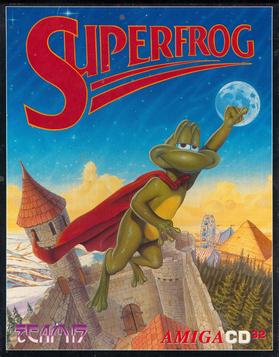
Superfrog is a scrolling 2D platform game, originally developed for the Amiga and published in 1993 by Team17. Later releases were handled by Ocean Software and GOG.com.

Total Carnage is a multidirectional shooter arcade video game originally developed and published by Midway in North America in January 1992. Set in the fictional country of Kookistan during 1999, players assume the role of Captain Carnage and Major Mayhem from the Doomsday Squad in a last-ditch effort to overthrow dictator General Akhboob and his army of mutants from conquering the world, while also rescuing POWs held by his military force.

Jungle Strike is a video game developed and published by Electronic Arts in 1993 for the Sega Genesis/Mega Drive. The game was later released on several other consoles such as the Super Nintendo Entertainment System (SNES), and an upgraded version was made for DOS computers. The Amiga conversion was the responsibility of Ocean Software while the SNES and PC DOS versions were that of Gremlin Interactive, and the portable console versions were of Black Pearl Software. It is the direct sequel to Desert Strike and is the second installment in the Strike series. The game is a helicopter-based shoot 'em up, mixing action and strategy. The plot concerns two villains intent on destroying Washington, D.C. The player must use the helicopter and occasionally other vehicles to thwart their plans.
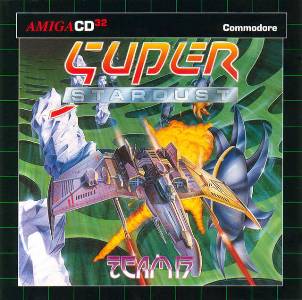
Super Stardust is multidirectional shooter developed by Bloodhouse and published by Team 17 for the Amiga (AGA) in 1994 and CD32 in 1995. The game was ranked the 26th best game of all time by Amiga Power.

Alien Breed II: The Horror Continues is a run and gun video game, the sequel to Alien Breed. It was released in 1993 by Team17 for the Amiga, available in both OCS/ECS and AGA versions. The AGA version of the game was also included as an extra in the Amiga CD32 version of Alien Breed: Tower Assault.

Alien Breed: Tower Assault is run and gun video game, the third in the Alien Breed franchise. Like the first two games in the series, it is a science fiction-themed, top-down shooter. It was released in 1994 by Team17 for the Amiga, PC and CD32.

Alien Breed 3D II: The Killing Grounds is a first-person shooter game developed by Team17 for Amiga. Published by Ocean Software in 1996, it is the fifth game in the Alien Breed franchise, a series of science fiction-themed shooters.

Qwak is a 2D puzzle-platform game developed by Jamie Woodhouse. It was initially released for the BBC Micro and Acorn Electron in 1989 as part of Superior/Acornsoft's Play It Again Sam 10 compilation. An updated and enhanced Amiga version was given a budget release by Team17 in 1993. This update added several new features, including a two player mode and additional levels. The game was re-released on the Amiga CD32 later that year in a double-pack with science fiction shooter Alien Breed.
Alien Breed is a series of top-down science fiction shoot 'em up video games developed by Team17 primarily for the Amiga in the 1990s, heavily inspired by the Alien films and featuring game play reminiscent of the classic arcade game Gauntlet. Later, first-person shooter titles were released under the Alien Breed name. In 2009, the series was revived with Alien Breed Evolution.

Worms is a 2D artillery tactical video game developed by Team17 and released in 1995. It is the first game in the Worms series of video games. It is a turn based game where a player controls a team of worms against other teams of worms that are controlled by a computer or human opponent. The aim is to use various weapons to kill the worms on the other teams and have the last surviving worm(s).

Worms: The Director's Cut is an artillery strategy game, a sequel to Worms, developed by Team17 and published by Ocean Software. It was programmed by Andy Davidson and released in 1997 for the Amiga platform only.
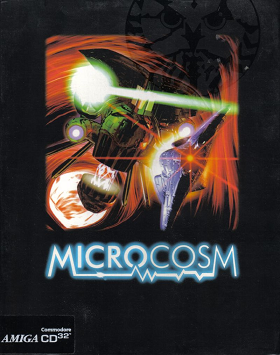
Microcosm is a 3D rail shooter video game developed and published by Psygnosis in 1993. It was originally developed for the FM Towns, and ported for the Sega CD, Amiga CD32, 3DO, and MS-DOS. Microcosm featured realistic FMV animation, with the graphics being rendered on Silicon Graphics workstations. The game is either in first-person or third-person view depending on the gaming system.

The Amiga CD32 (stylized as Amiga CD32, codenamed "Spellbound") is a 32-bit home video game console developed by Commodore and released in Europe, Australia, Canada, and Brazil. It was first announced at the Science Museum in London on July 16, 1993, and was released in September of the same year.

The Speris Legacy is a 1996 action role-playing game developed by Binary Emotions and published by Team17 that was released for the Amiga 1200 and Amiga CD32.
Team17 Group plc is a British video game developer and publisher based in Wakefield, England. The venture was created in December 1990 through the merger of British publisher 17-Bit Software and Swedish developer Team 7. At the time, the two companies consisted of and were led by Michael Robinson, Martyn Brown and Debbie Bestwick, and Andreas Tadic, Rico Holmes and Peter Tuleby, respectively. Bestwick later became Team17's chief executive officer until 1 January 2024. After their first game, Full Contact (1991) for the Amiga, the studio followed up with multiple number-one releases on that platform and saw major success with Andy Davidson's Worms in 1995, the resulting franchise of which still remains as the company's primary development output, having developed over 20 entries in it.

ATR: All Terrain Racing is a racing game published by Team17 for Amiga and Amiga CD32 on May 8, 1995. During a protracted dispute between Team17 and Amiga Power, the magazine's reviewer, Jonathan Nash, awarded ATR: All Terrain Racing a rating of 38%, prompting the developer to pursue a lawsuit for defamation.
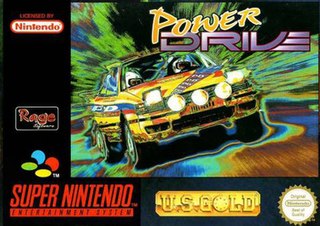
Power Drive is a 1994 racing video game developed by Rage Software and published by U.S. Gold. The player competes in rally driving in various countries.
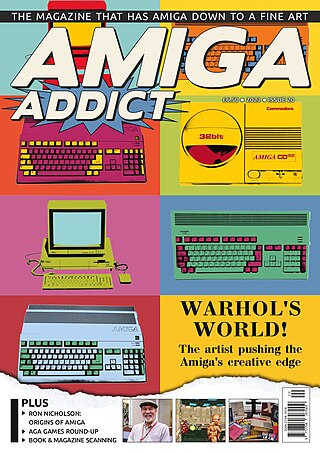
Amiga Addict was the first Amiga magazine to be sold in newsagents in the UK and internationally since Total Amiga magazine ceased in 2007 which has resulted in praise from the wider games press for the magazine's quality and courage, partly due to the challenges the publication faces in keeping the Amiga relevant now that it is an older niche platform.


















